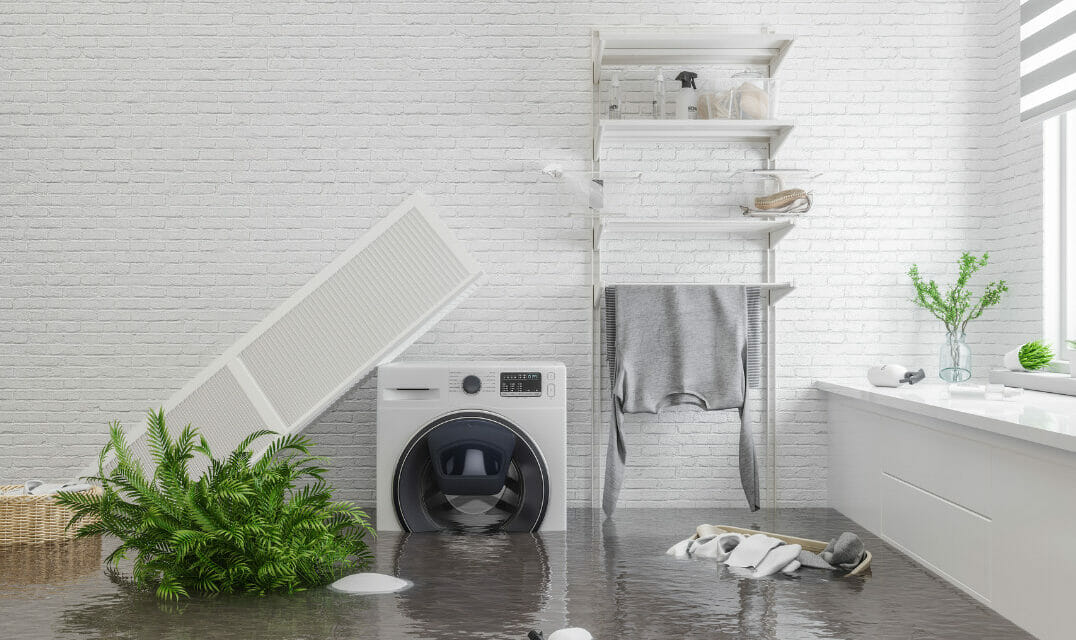Water damage isn’t something you can easily brush off. Sometimes you won’t even know it’s there without a proper home inspection. Staying on top of your home’s health is crucial to avoiding situations dangerous to your health and your house’s integrity. Learning what too much water can do to your home might convince you to take measures to avoid it at all costs.
What Can Water Damage Do?
Water damage can lead to serious consequences that affect the integrity of your house. If left untreated, it might also lead to mold growth, which can harm your physical health. You shouldn’t ignore water damage for several reasons, including those listed below.
1. Leaky Roof
Your mind might think of your roof first when you’ve experienced a lot of rain. That’s because water can get beneath warped shingles or creep in where they’re missing. Unfortunately, the water that seeps in through your roof can be dangerous, as it can lead to rot and mold growth.
In addition to those hazards, if the water gets in your attic, it might cause wires to short out, which could lead to fire hazards. You shouldn’t ignore a leak once you see one. Try to stop it as soon as possible and get your roof repaired quickly to keep future rain out of your home.
2. Broken Pipes
Sometimes, a burst pipe can lead to excess water. In addition to worrying about repairing the pipe, you also must consider what water damage could happen within your walls. You could be paying extra monthly in water bills because of a small leak. Keep an eye on your monthly statements so you can see if you should inspect for a burst or leaking pipe.
In some cases, you may be able to seal a leaky pipe yourself, but you should always call a professional if it seems like too much for you.
3. Shaky Foundation
If you don’t have a proper downspout, rainwater isn’t being directed away from your house effectively. Excess water means it drains straight down, seeping into the ground near your foundation. You could pay thousands to repair your foundation if water causes it to crack. While adding a slope to your home at least 10 feet out can help water drain more effectively, it isn’t always an option — so keep an eye on your downspouts.
4. Potential Flooding
If you have a basement, you also need to ensure you have a way for water to drain. If moisture gets into your basement, you may face water damage to your floors and walls. A torrential downpour could leave your basement uninhabitable for a while until the water recedes or is otherwise dealt with.
The best way to get rid of water is to have a drain nearby, whether on the floor or beside an outside entrance. It’s better to drain it right away than let it sit and cause damage.
5. Mold Growth
Water is excellent for encouraging mold growth, which is a health risk and can exacerbate any allergies in your household. It can also be deadly to people with compromised immune systems or respiratory issues. Mold can even affect you if you don’t have allergies, just by inhaling or touching spores you might not even see.
The best way to get rid of mold is to prevent it from happening in the first place, which means you must minimize the humidity and moisture in your home.
How Do You Prevent Water Damage?
Unfortunately, you have no way to predict when the rain will come. However, you can take steps to mitigate some of the damage done before it happens. Try these techniques to prevent your home from accruing too much water damage.
1. Keep an Eye on Your Home
After every major storm, you should check your house inside and out to ensure its integrity hasn’t been compromised by the wind and the rain. Look for loose or missing shingles on your roof, as well as any spouts that seem like they’re bursting. You can even reinforce your roof with a special tape that can keep water out of the seams.
Inside, walk throughout your home to see if anything is leaking through your ceiling. While it might seem tedious, surveying your home after a storm is one of the fastest ways to note if it caused any damage that will become an issue.
2. Plan for Rain
While you might not be able to predict every rainstorm, you can keep your eye on the weather and adequately prepare. If you know something needs fixing before a major thunderstorm, handle it ahead of the next downpour. Make sure water drains from your roof effectively without getting into your attic or foundation.
If your basement doors and windows are known to leak, put towels or some other form of absorption there. In the future, you may want to plan to replace your doors and windows to make them better suited for the weather.
3. Reinforce Your Structural Support
Sometimes, wood bends and bows due to water, and there isn’t enough structural support to keep it from warping and affecting your home as a whole. Crawl spaces can become dangerous when they absorb too much water and you can’t ever accurately judge if the space is dry — even if you don’t see standing water. A dehumidifier can introduce healthy humidity levels in your crawl space that will stop mold growth before it happens and keep your crawl space safe for anyone who needs to use it.
Otherwise, you might need to introduce more physical support. Sister joists can help support damaged floor joists, which can also help keep your floor functioning well without any sagging. Keep an eye out for what you need, and you can better support your crawl space and other areas of your home throughout any kind of weather.
4. Get Regular Inspections
Relying on inspectors to help you judge the health of your home is a great decision, as they can tell you with confidence when you need to worry. Strive to get an inspection done once every few years, just in case. You want to catch something before it worsens, and an inspection can ensure your home is sturdy.
While many people think inspections might only be for home buying, they’re great to conduct if you’ve had a string of bad weather or experienced a natural disaster recently.
Protect Your Home From Water Damage
Water damage can be frightening, but you don’t need to worry if you have plans in place to avoid rainwater causing damage to your home. You can take several steps to protect your house from mold growth and compromised structure — it all depends on how much investment you’re willing to put into your home.





















